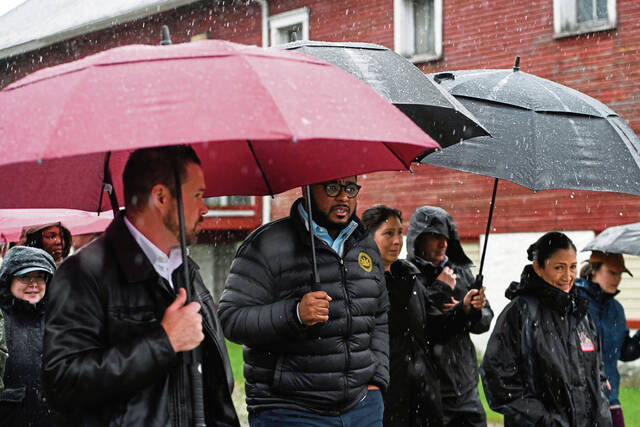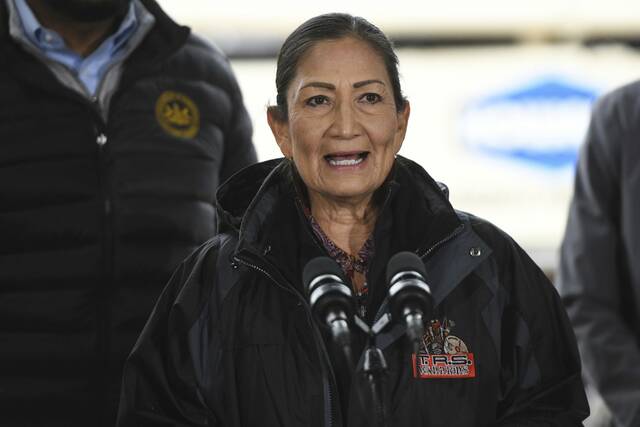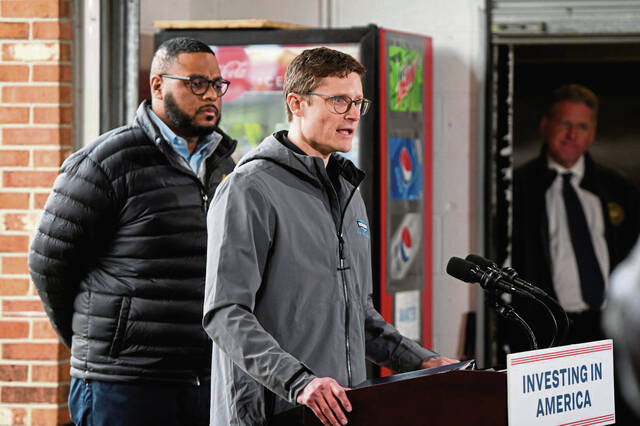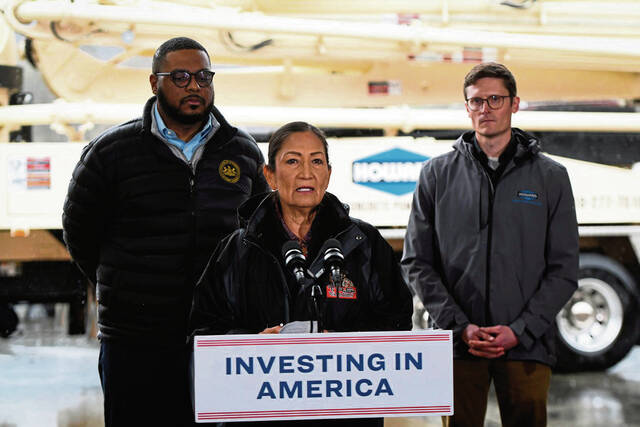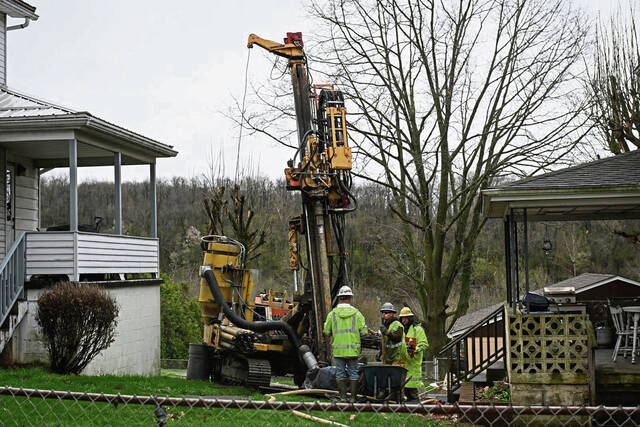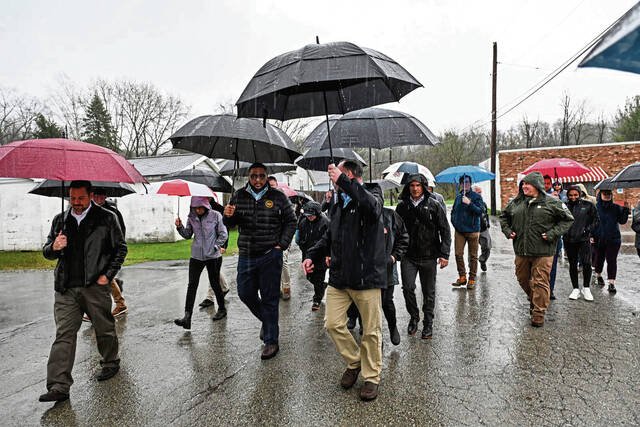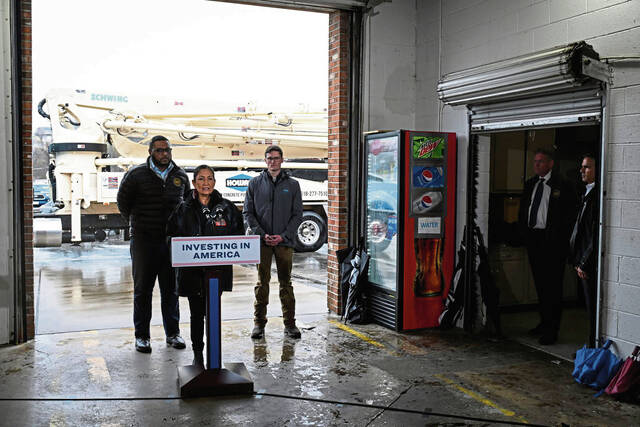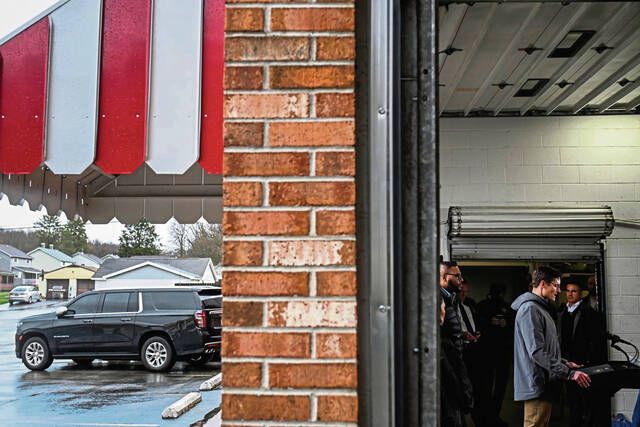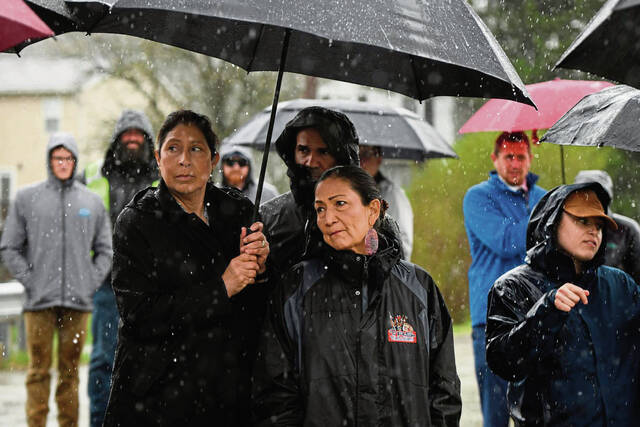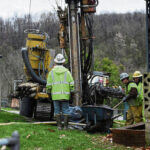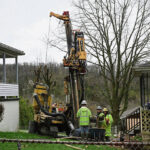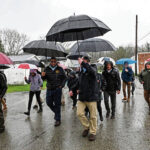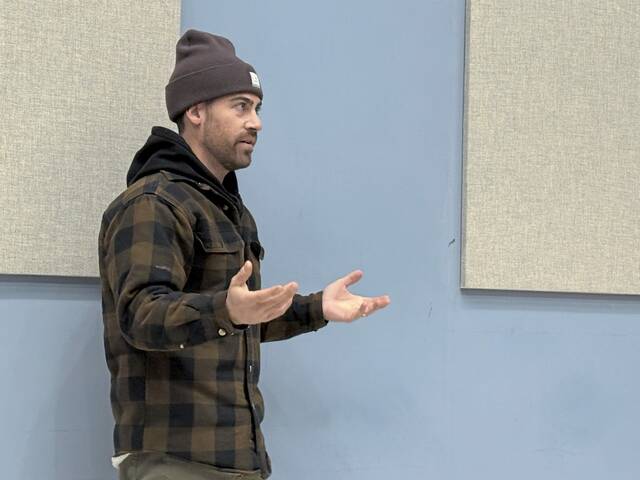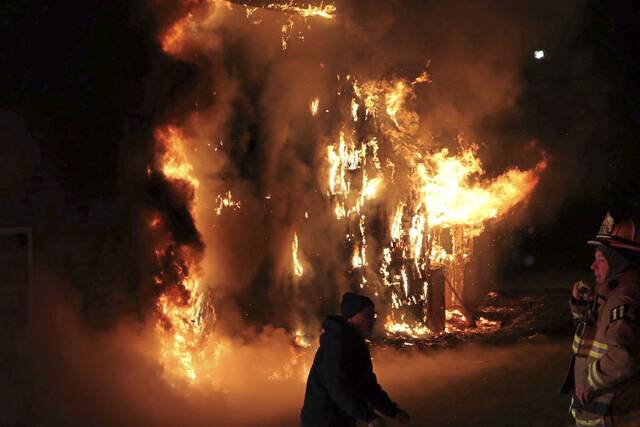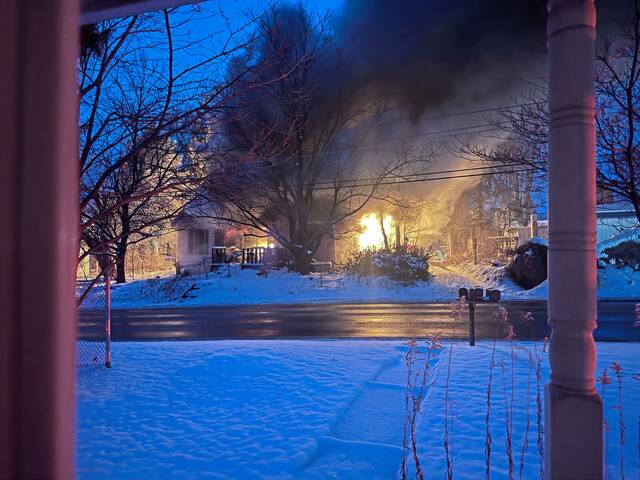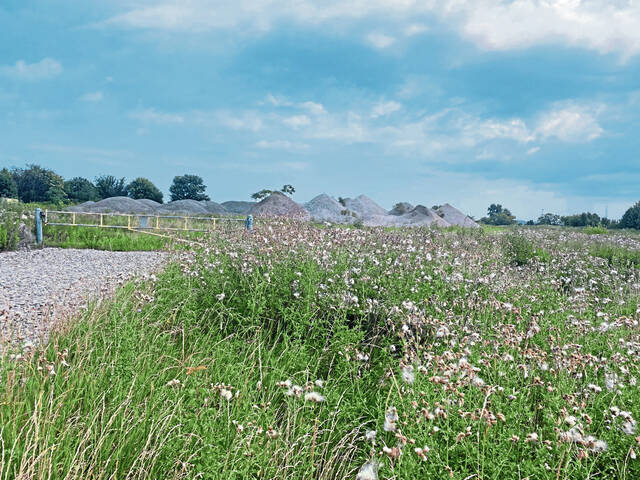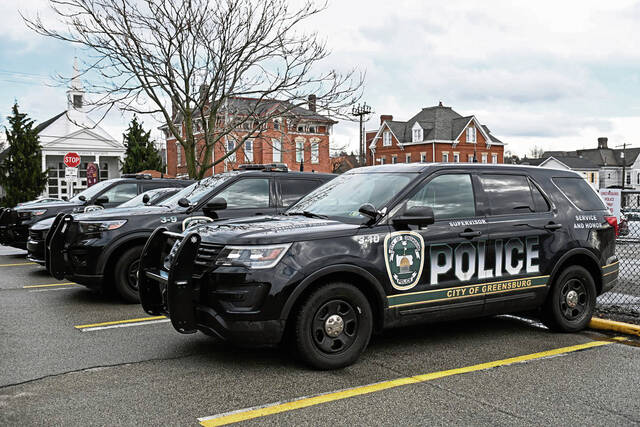Workers were busy Wednesday drilling a hole in a yard near the top of the hill on Bovard’s Price Street.
They were preparing to stabilize one of about 100 targeted homes in the Hempfield village by injecting cement-like grout to fill a section of the abandoned Keystone Coal and Coke Co. mine below it.
Eventually, the crew will work its way downhill and perform the same job at Jane Byers’ home as part of a federally-funded $6 million reclamation project meant to protect homes from potential mine subsidence.
U.S. Secretary of the Interior Deb Haaland visited Bovard on Wednesday to tour the project and to announce another $244 million for reclamation of other abandoned Pennsylvania mine sites.
“There’s an ongoing need across Pennsylvania to invest in abandoned mine land reclamation,” Haaland said.
Unlike some other residents, Byers hasn’t noticed any tell-tale signs of subsidence at her house, such as cracks in a wall.
But she was glad to sign up for the proactive program, which involves no charge for participating property owners.
“Why not?” said Byers, whose grandfather, Charles Kocur, was a union official who worked at the Hempfield mine. “Why take the chance? We’re glad they’re doing it.
“Whoever lives here next, it will be better for them.”
Byers recalled when federal officials came to Bovard in the late 1990s to tackle a sinkhole that developed at the community’s ball field.
“There was a real big hole out around left center field, and they filled that in,” she said.
That was one of the signals of potential trouble that eventually put Bovard on the map for a comprehensive project to prevent further subsidence.
The state Department of Environmental Protection responded to a handful of additional emergency subsidences that affected individual homes, including some properties on Prisani Street.
That triggered a round of exploratory drilling in Bovard, which allowed officials to designate 35 acres for the subsidence project.
Federal funding
Funding for the Bovard project is part of $244 million in federal dollars the DEP received in 2022 for mine reclamation, through the Infrastructure, Investment and Jobs Act.
DEP officials have yet to determine what projects will have a share of the new round of funding announced Wednesday by Haaland. In addition to stabilizing subsidence-prone areas, other needs include treating mine drainage to improve water quality, removing coal waste piles and re-grading highwalls that can result in hazards such as loose dirt and trees.
Lt. Gov. Austin Davis joined Haaland in Bovard. He pointed out Pennsylvania has more abandoned mines than any other state and is getting nearly a third of the $725 million in new federal funding targeted for mine reclamation across the country.
“Reclaiming and restoring these sites will create jobs, revitalize economic activity and advance outdoor recreation across the country as we work to clean up these public safety hazards and build healthier communities,” Haaland said.
“Many of (Pennsylvania’s coal mines) were abandoned in the early part of the last century,” Davis said. “The coal that was mined there built and supported communities like this…
“But, at some point, those mines closed and, over the years, a lot of homes and businesses and community centers have been built over top of old mines. A lot of those abandoned mines weren’t properly closed up, which can lead to a lot of problems.”
DEP officials said the Bovard subsidence project is meant to reclaim mining that occurred before 1936. According to a Bovard community history published in 1985, the mine was sold in 1942 to Adam Eidemiller Enterprises, and the deep mine operation came to an end a year or two later.
Mine reclamation
According to Davis, Pennsylvania has reclaimed more than 91,000 acres of its abandoned coal mines, but at least 180,000 additional acres remain to be addressed.
“That’s the same size as 14,516 Acrisure Stadiums,” he said. “This is a top priority, and we’re not going to take our foot off the gas pedal.”
Howard Concrete Pumping of Canonsburg was the low bidder for the Bovard subsidence project. Owner Frank Howard said work began in early March and should take a year or more to complete.
At the peak of operations, he said, about 10 union tradesman should be working on the project, along with managers and engineers.
“Roughly 25% of our workforce is enrolled in a union mentorship program,” he said.
As of Wednesday, 14 residential properties had been stabilized, according to company superintendent Buck Cizmek.
Previously, the DEP tapped federal funds to stabilize about 100 homes near an abandoned mine in the Derry Township village of Bradenville.
“They did a very nice job,” said Jim Prohaska, chairman of the township supervisors. “The only bad thing was some people’s floor drains went into the mine, and they had to reroute that.”
Environmental program manager Roger Rummel said the DEP’s Bureau of Abandoned Mine Reclamation responds to as many as a dozen emergency subsidences each year.
One of the latest occurred in late March, resulting in damage to a home in Connellsville. The DEP is tapping federal funding to fill the mine void, but the property owner will be responsible for repairing damage — including cracks in the foundation walls, shifted basement piping and a shifted front porch.
Davis said owners can visit pa.gov/msi to check whether their property is in a subsidence-prone area and learn about obtaining low-cost subsidence insurance.



